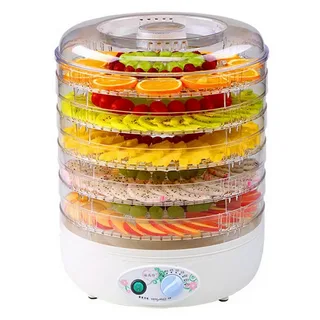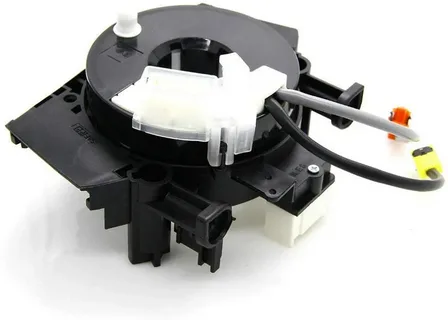In the bustling world of commercial kitchens, efficiency and innovation are paramount. A food dryer or commercial-dehydrator can be a game-changer, allowing chefs to maximize the use of ingredients, enhance flavors, and reduce food waste. Whether you’re running a restaurant, café, or catering service, investing in a food-dryer can open up a new realm of culinary possibilities while also streamlining your operations.
Understanding the Basics of Food-Dryers
A food-dryer, or commercial-dehydrator, removes moisture from food items, extending their shelf life and maintaining nutritional value. This is achieved through the dehydration process, which uses convection heating to circulate warm air around the food, ensuring even drying and preventing the growth of bacteria and mound. Commercial food-dryers come in various sizes, from small countertop units to large industrial models, catering to the needs of high-volume kitchens.
Key components include adjustable temperature settings and timers, allowing chefs to control the drying process precisely. Proper air circulation is crucial; many models have advanced airflow systems to guarantee uniform drying across all trays. Understanding these fundamental aspects of food-dryers can help you optimize their use, resulting in better preservation and flavor concentration of your ingredients.
Innovative Uses of Dehydrated Foods in Culinary Creations
Dehydrated foods are incredibly versatile, offering chefs endless opportunities to innovate and elevate their dishes. Imagine adding a burst of flavor to desserts with dehydrated fruits that intensify sweetness and texture without the added moisture. Fruits such as strawberries, mangoes, and apples can be dried and incorporated into cakes and pastries or used as a garnish to add visual appeal and flavor. When dehydrated, vegetables can be ground into fine powders, which are perfect for enhancing soups, stews, and sauces.
For example, mushroom or tomato powders can add a rich umami flavor to broths or pasta dishes. In contrast, dehydrated spinach or kale powders can provide a nutritious boost to smoothies and dressings. Dehydration also benefits herbs and spices, concentrating their flavors and extending their shelf life. Dried basil, rosemary, or thyme can create potent spice blends, marinades, and rubs that infuse meats and vegetables with robust flavors.
Even proteins like beef or fish can be dehydrated to make gourmet jerky or savory snacks, which are both convenient and delicious. Moreover, dehydrated foods are ideal for molecular gastronomy, where chefs can experiment with textures and forms that would be impossible with fresh ingredients. Dehydrated ingredients can be rehydrated with liquids to create new textures or used in powdered form to add unexpected twists to familiar dishes. This versatility allows chefs to push the boundaries of traditional cooking and create unforgettable dining experiences for their patrons.
Features to Look for in a High-Quality Commercial Dehydrator
When investing in a commercial dehydrator for your kitchen, it’s crucial to focus on features that ensure efficiency, reliability, and versatility. Here are the top five features to consider:
Adjustable Temperature Controls
Look for a dehydrator with a wide range of temperature settings. Different foods require varying temperatures for optimal dehydration, and precise control allows you to tailor the process to specific ingredients, ensuring the best texture and flavor.
Advanced Airflow System
Uniform drying is essential for quality and consistency. Choose a model with a robust airflow system that ensures the circulation of warm air throughout the trays. This prevents hotspots and guarantees that all food items dehydrate evenly.
Capacity and Expandability
Assess your kitchen’s needs and select a dehydrator with ample capacity. High-volume kitchens may benefit from larger units or expandable tray systems, allowing you to scale up operations without needing multiple machines.
Energy Efficiency
Energy costs can increase, especially in commercial settings. Opt for energy-efficient models that consume less power without compromising performance. Features like insulated chambers and efficient heating elements can reduce operational costs.
Ease of Cleaning
Maintenance should be straightforward to ensure hygiene and prolong the machine’s lifespan. Dehydrators with removable, dishwasher-safe trays and stainless steel construction simplify cleaning. Units with easy-to-access parts can help you perform regular maintenance tasks quickly.
Selecting a commercial-dehydrator with these features will help you maximize efficiency, ensure consistent results, and maintain high standards in your culinary operations.
How to Properly Maintain and Clean Your Commercial-Dehydrator?
Proper maintenance and cleaning of your commercial-dehydrator are crucial for optimal performance and longevity. After each use, remove any residual food particles from the trays and other surfaces. Cleaning the trays with warm, soapy water is generally effective, and many models feature removable trays to simplify this task. Additionally, regularly inspect the heating elements and fans for any buildup or obstructions, as these can impede drying efficiency and lead to uneven results.
Consider a deeper cleaning routine every few weeks. This might involve using a mild disinfectant to sanitize the interior and ensuring that all parts are thoroughly dried before reassembly. Check for signs of wear or damage to key components like the door seals and ensure that air vents are clear and unobstructed. To avoid flavor cross-contamination, it’s beneficial to dedicate specific trays for particular types of food, such as herbs or meats. Implementing a regular maintenance schedule can help you catch potential issues early and keep your unit running smoothly.
Tips for Choosing the Right Dehydrator for Your Kitchen Needs
To select the ideal food-dryer for your commercial kitchen, assess your daily production volume. High-traffic kitchens may need larger capacity units that can handle significant batches simultaneously. Next, consider the variety of ingredients you’ll be dehydrating. Some models are better suited for delicate items like herbs, while others excel with dense foods like meats.
The available space in your kitchen is also crucial; ensure the unit fits seamlessly without disrupting workflow. Energy efficiency is another key factor that can influence your operational costs. Look for models with adjustable temperature settings and precise timers to accommodate different foods and drying requirements. Advanced airflow systems are essential for uniform drying, preventing uneven results. Additionally, consider the ease of cleaning and maintenance—units with removable trays and stainless steel construction can save time and effort.
Noise levels might also be a concern, especially in open kitchens, so quieter models could be beneficial. Lastly, check for features like programmable settings and stackable designs, which offer convenience and flexibility, making the dehydrator more adaptable to your kitchen’s changing needs. Customer reviews and brand reputation can also guide your decision, ensuring you invest in a reliable and efficient dehydrator.
Benefits of Using Commercial Dehydrators Australia
Australia’s vibrant culinary scene stands to gain significantly from the integration of commercial dehydrators Australia.
- The country’s rich and diverse agriculture offers a wealth of local fruits, vegetables, and herbs that can be transformed into unique, dehydrated ingredients. This allows chefs to incorporate distinct regional flavors into their menus and supports local farmers and producers. Dehydrating fresh produce helps to combat food waste by preserving ingredients that might otherwise spoil, thus aligning with the growing emphasis on sustainability in the hospitality industry.
- Dehydrated foods provide unparalleled convenience and versatility, particularly useful for catering businesses and event planning. Imagine having a pantry stocked with an array of dried fruits, vegetable powders, and herb blends ready to be used immediately. This flexibility is invaluable for chefs delivering consistent quality in various settings.
- Another significant advantage is the ability to preserve seasonal produce. With a commercial-dehydrator, chefs can take advantage of peak harvest times, drying and storing ingredients to be used throughout the year. This ensures that dishes remain innovative and exciting regardless of the season. Moreover, the concentrated flavors achieved through dehydration can elevate culinary creations, offering patrons a unique dining experience that highlights the best of Australian produce.
- Commercial-dehydrators can help reduce overhead costs. By buying produce in bulk during peak seasons and preserving it, restaurants can mitigate the price fluctuations and availability issues that often accompany off-season purchasing. This cost-effectiveness can improve the overall profitability of culinary operations, making commercial-dehydrators a wise investment for any kitchen looking to optimize resources and elevate its menu offerings.
Common Mistakes to Avoid When Using Food-dryers
One of the most frequent mistakes in using food-dryers is overcrowding the trays, which inhibits proper air circulation and leads to uneven drying.
- To avoid this, always leave adequate space between food items. Another common error is failing to rotate the trays during the drying process. This can result in some sections drying faster than others. Regularly rotating the trays ensures more consistent results.
- Refrain from pre-treating certain foods, like fruits, can also be problematic. Pre-treating with solutions like lemon juice can prevent enzymatic browning and preserve the food’s color. Additionally, not slicing food uniformly can lead to inconsistent drying times. Ensure that all slices are of equal thickness for even dehydration.
- Ignoring temperature settings is another issue. Different foods require different drying temperatures; using the wrong setting can compromise the food’s quality and nutritional value. It’s crucial to familiarize yourself with the optimal temperatures for various ingredients.
- Another mistake is storing dehydrated foods improperly. Even after thorough drying, if the food is not stored in airtight containers, it can reabsorb moisture from the air, leading to spoilage. Use vacuum-sealed bags or airtight jars to maintain the quality of your dried goods.
- Lastly, cleaning the dehydrator regularly can lead to contamination and improved efficiency. Residual food particles can attract bacteria and mound, affecting subsequent batches. Always clean trays and interior surfaces after each use, and perform a deep clean periodically to maintain optimal performance.
Conclusion
Incorporating a food dryer into your commercial kitchen can revolutionize how you approach food preparation and storage. By effectively removing moisture, a commercial-dehydrator helps extend the shelf life of ingredients, ensuring that you can use them long after their peak season. This supports sustainable practices by reducing food waste and allows for greater menu flexibility throughout the year. Dehydrated foods offer chefs unparalleled versatility, enabling the creation of concentrated flavors and unique textures that can elevate any dish.
FAQs
What types of food can I dehydrate in commercial dehydrator?
You can dehydrate various foods in commercial dehydrator, including fruits, vegetables, herbs, and meats. Popular choices include strawberries, mangoes, apples, mushrooms, tomatoes, spinach, and beef.
How long does it take to dehydrate food?
Drying times vary based on the type of food and the thickness of the slices. Generally, it can take anywhere from a few hours to over a day. For example, thinly sliced fruits may take 4-8 hours, while thicker cuts of meat could require up to 24 hours.
Do I need to pre-treat fruits before dehydrating?
Pre-treating fruits with solutions like lemon juice can help preserve color and prevent browning. This step is particularly important for fruits like apples and bananas, which oxidize quickly.
Can I use a home food-dryer in a commercial setting?
While home models can be used in smaller operations, they typically need more capacity and efficiency for high-volume commercial kitchens. Investing in a commercial-dehydrator ensures better performance and consistency.
How can I tell when my food is fully dehydrated?
The food should be dry and brittle to the touch but not completely crumbly. It’s important to check for any remaining moisture to ensure proper preservation and avoid spoilage. A good test is to let a piece cool and then break it; it should snap cleanly.




